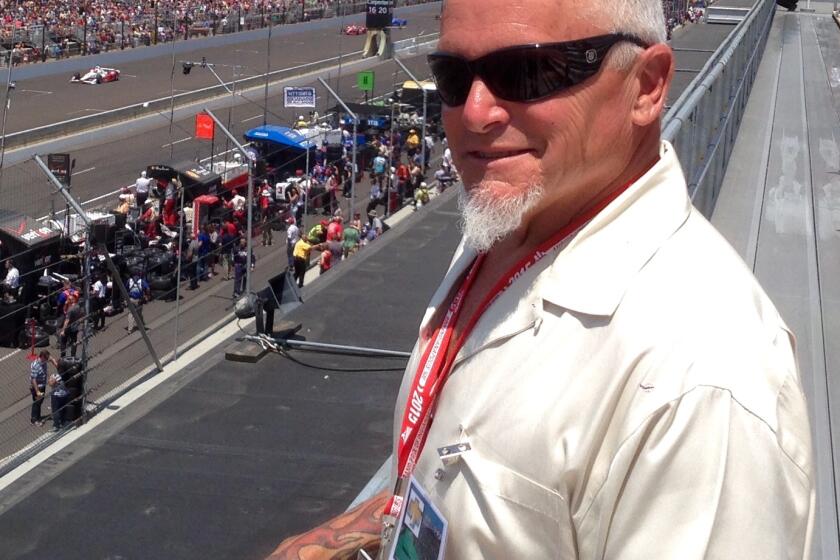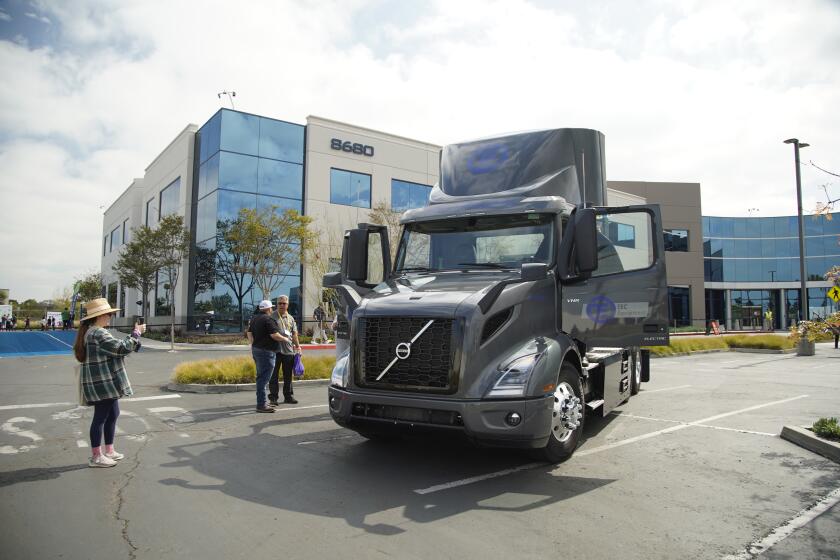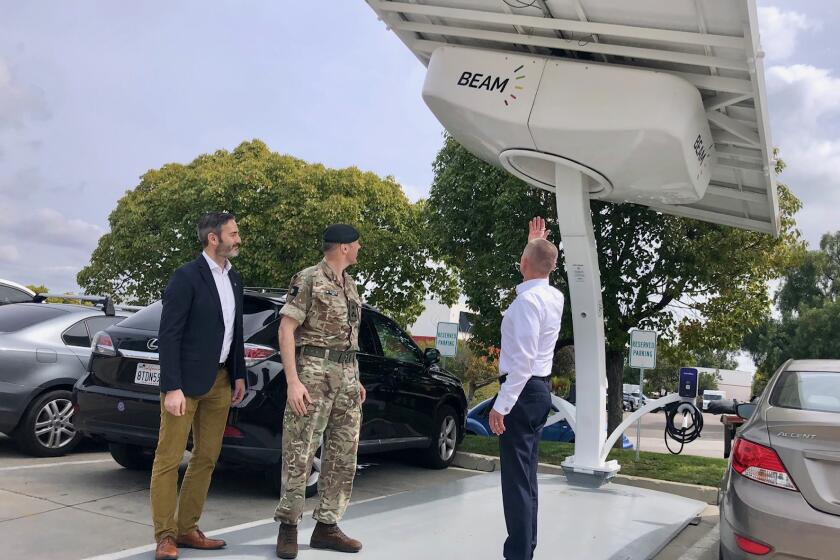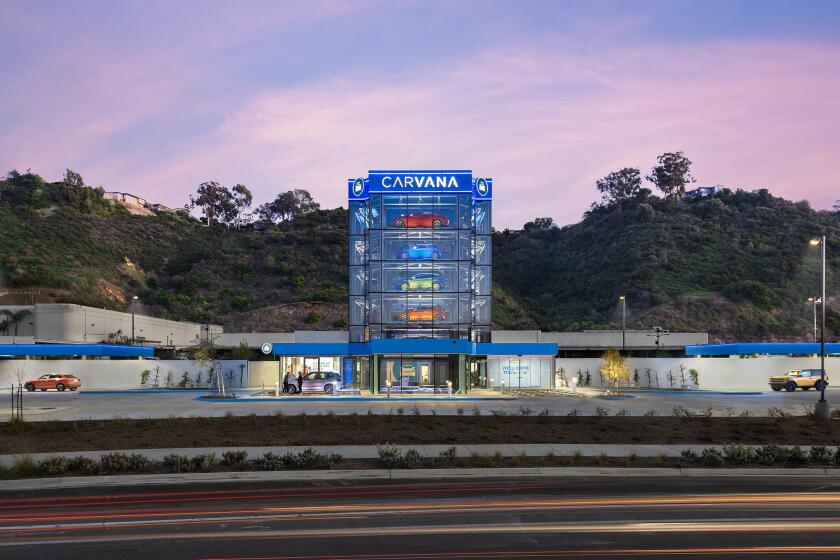Subaru STI S209: It’s all about the grip — and grin
No namby-pamby electronic rev-matching downshifts, no ‘sound generated’ engine noise and no driver-assist technologies — no problem
The Brembo brake discs on the S209 had started to squeal, which was the car’s way of saying there’d been too much city driving. It was time to get out of town and stab some gears, dive into corners and get those big discs heated up to burn off the glaze.
Subaru’s “green hell” tribute, the STI S209, did not have to ask twice.
As Subaru grows in popularity for its safe-and-sane sedans and SUVs, it is supporting its enthusiast segment. The 2019 S209 was a limited run of 209 cars for the U.S. market and the first S-Line performance model brought to the States — legally.
It was a one-year tribute to the WRX STI Nürburgring Challenge race car, which won its class at the 2019 24 Hours of Nürburgring. It was the sixth time STI dominated the SP3T class at the endurance race.
As a track-focused halo of the WRX STI, the S209 is the latest in a high-performance tradition that dates to Japanese market STI models from the 2000 S201 through the 2018 S208.
It opens the possibility for other S-line vehicles for the U.S., but Subaru isn’t saying which model or when. But the BR-Z sporty coupe would be a contender — there are S-Line conversions of it in Japan, as well as previous-generation Foresters and an Outback.
STI, or Subaru Technica Institute, is Subaru’s in-house motorsports division. S-Line performance vehicles, such as the STI S209, get upgrades in power, handling, aerodynamics and driver controls. The WRX models are built in Gunma, Japan, and the S-Line models are then trucked about 42 miles to Kiryu, Japan, for final assembly of the engine modifications and bodywork alterations.
The high-output, turbocharged, 2.5-liter flat four-cylinder engine has 341 horsepower, with maximum turbo boost of 18.9 psi, and 330 foot-pounds of torque at 3,600 rpm. The only transmission offered is a short-throw, six-speed manual, with hill-start assist. Fuel-economy ratings of 15 mpg city, 21 highway and 17 mpg combined require premium — the higher the octane, the better.
Subaru’s standard Symmetrical All-Wheel-Drive has limited-slip front and rear differentials with a console controller for the driver to adjust the power split front-to-rear from the standard setting of 41/59. In hot track work, the driver can cool the charge of air going into the cylinders with an intercooler spray switch on the steering wheel.
Finding one
With nearly three times as many U.S. dealers as cars to go ’round, owner loyalty is crucial. Subaru retailers who did get the S209 were chosen for their commitment to the customer and community experience through their participation in the Subaru Love Promise program, combined with their past history of WRX/STI sales.
Pricing is an all-in $64,880, including the $885 freight charge and a $1,000 gas-guzzler tax (paid by Subaru). It was/is available in paint colors of World Rally Blue or Crystal White Pearl, both with gold-colored 19-inch wheels and an S209 serial-number badge on the center console. No options are offered.
It has no namby-pamby electronic rev-matching downshifts, no “sound generated” engine noise and no driver-assist technologies, other than three pedals, a handbrake at the console and electronic torque vectoring for cornering control.
The S209 is a heavy-duty build, and stiff — as in a stiff gearbox, stiff weight to the clutch, stiff steering weight, stiff ride and stiff price, none of which is painful — at least to the enthusiast.
Standard equipment includes smart-key locking and push-button ignition, rearview camera, heated seats-mirrors-windshield, lighted vanity mirrors, 7-inch infotainment touch screen with Apple CarPlay or Android Auto, and headlights that turn with the steering wheel.
The driver area is a command center of control with open sightlines, an easy-read touch screen and sensible dials for climate control. Ultrasuede upholstery has silver and black bolsters with silver stitching. The Recaro sport seats have eight-way power adjustment for the driver.
A standard, 310-hp WRX STI starts at about $38,000, but with some STI add-ons the price easily grows to $42,000 to build a very engaging and enjoyable car to drive.
Performance
Subaru claims 0-60 acceleration in 4.9 seconds, which is doable because there’s no need to rush the shifts. First gear can be pushed to almost 40 mph and a pull to second brings the speed to just below 60, so it takes a shift to third. At 65 mph on the highway, the engine is revving at 2,500 rpm.
High-performance mufflers with 4-inch hand-polished stainless-steel exhaust tips help trim air-flow resistance by 17 percent.
The S209 can be a daily driver, but not so much a commuter. Its Dunlop SP Sport Maxx GT600A summer-only tires are a unique formulation for the S209, earning it a very low and grippy treadwear rating of 200. Ratings much below 200 might not be legal for street driving and the rating can go to 740, such as for SUV tires. For comparison, the 19-inch Michelin Pilot Super Sport ZR tires on the Toyota Supra have a treadwear rating of 300. So, the S209 tires are for serious duty and wrapped around lightweight forged BBS alloy wheels.
The sticky Dunlops allow a maximum lateral grip of a little more than 1.0g, which puts the S209 in the class of the Supra (1.07g) or McLaren 720S (1.09g), according to fastestlaps.com.
Four-wheel Brembo disc brakes have 13.4-inch ventilated and cross-drilled front rotors with six-piston monoblock calipers, and 12.8-inch ventilated and cross-drilled rotors with dual-piston monoblock calipers rear. The Super-Sport g-sensor anti-lock brake system includes brake-force distribution, brake assist and brake override.
To keep it settled at high speed, it gets a spreadsheet of engineering support: Specially developed Bilstein dampers, stiffened coil springs, a 20 mm rear stabilizer bar and pillow-type bushings for the front-rear lateral links.
Other Nürburgring race-car tech that trickles down to the S209 include front, rear and side underspoilers, front bumper canards, a (driveway-scraping) front spoiler and about the biggest, adjustable trunklid carbon-fiber wing on a production car. Front fender vents aid engine cooling and rear fender vents settle air turbulence to reduce drag and boost downforce. Plus, a carbon-fiber roof panel helps lower the center of gravity.
The S209 looks street-racer ominous, but it’s not so obnoxious while driving. The bulging fenders accommodate half-inch-wider front and rear tracks to fit the 10-inch-wide Dunlops. But the width also stretches the turning circle to a broad 40 feet.
The competition-grade suspension does not beat up occupants, but you’ll know it when you hit a bump in the road. It is a precision tool that just feels built for stability at speed. In corners, you can push the nose out or pull it back in with the accelerator pedal.
But for $65,000, the owner brings home an engineering masterpiece. There is nothing pretend about the S209 — and it does have the important family car features of a usable back seat (60/40 folding) and a roomy trunk.
The S209 is built on the WRX/WRX STI platform and a swansong. The cars are expected to be redesigned and moved to Subaru’s global platform (with the Impreza) in late 2020 or early 2021 for the 2022 model year.
And it should be acknowledged that while Subaru is pursuing more performance, it is also at work with Toyota on a battery-electric SUV crossover. According to Automotive News, the vehicle could be ready for the Japan market in late 2021, with a U.S. introduction more likely in 2023. Subaru said in June that it “will now shift its existing BEV development resources to this new joint project.”
2019 Subaru STI S209
- Body style: compact, 5-seat, wide-body sedan with carbon-fiber roof panel and Symmetrical All-Wheel Drive with multimode driver control center differential, with three performance modes and six driver-selectable differential locking settings
- Engine: 341-hp, 2.5-liter 4-cylinder with HKS high-boost turbocharger and high-flow intercooler; max boost 18.9 psi; 330 lb.-ft. torque at 3,600 rpm
- Transmission: 6-speed manual
- Fuel economy: 15/21/17 mpg city/hwy/combined; premium required
SPECIFICATIONS
- Fuel tank: 15.9 gal.
- Trunk space: 11.8 cu. ft.
- Front head/leg room: 39.8/43.3 in.
- Rear head/leg room: 37.1/35.4 in.
- Length/wheelbase: 181.9/104.3 in.
- Curb weight: 3,485 lbs.
- Turning circle: 40 ft.
FEATURES
- Standard equipment includes: smart-key locking and push-button ignition, rearview camera, heated seats-mirrors-windshield de-icer, cruise control, lighted vanity mirrors, 7-inch infotainment touch screen with Apple CarPlay or Android Auto, Ultrasuede upholstery with silver and black bolsters with silver stitching, Recaro sport seats with eight-way power adjustment for the driver, headlights that turn with the steering wheel
- S209 features: BBS 19-inch wheels with 265/35 Dunlop SP Sport Maxx GT600A summer-only tires; higher-flow fuel pump and injectors; high-flow air intake system; HKS high-boost turbocharger; high-flow intercooler with water spray system; Super-Sport anti-lock brake system with g-sensor; Symmetrical all-wheel drive with multimode driver control center differential with 3 performance modes and six driver-selectable differential locking settings; electronically controlled limited-slip center differential; multimode vehicle dynamics control stability and traction control system with yaw-rate sensor; active torque vectoring; quick-ratio hydraulic power assisted rack-and-pinion (2.3 turns lock to lock)
- Safety features include: 8 air bags, Super-Sport anti-lock brake system with g-sensor, brake-force distribution, brake assist and brake override
PRICING
- Base price: $64,880, including $885 freight charge
- Options on test vehicle: none
- Where assembled: Kiryu, Japan
- Warranty: 3 years/36,000 miles bumper to bumper; 5 years/60,000 miles powertrain
Get Essential San Diego, weekday mornings
Get top headlines from the Union-Tribune in your inbox weekday mornings, including top news, local, sports, business, entertainment and opinion.
You may occasionally receive promotional content from the San Diego Union-Tribune.







